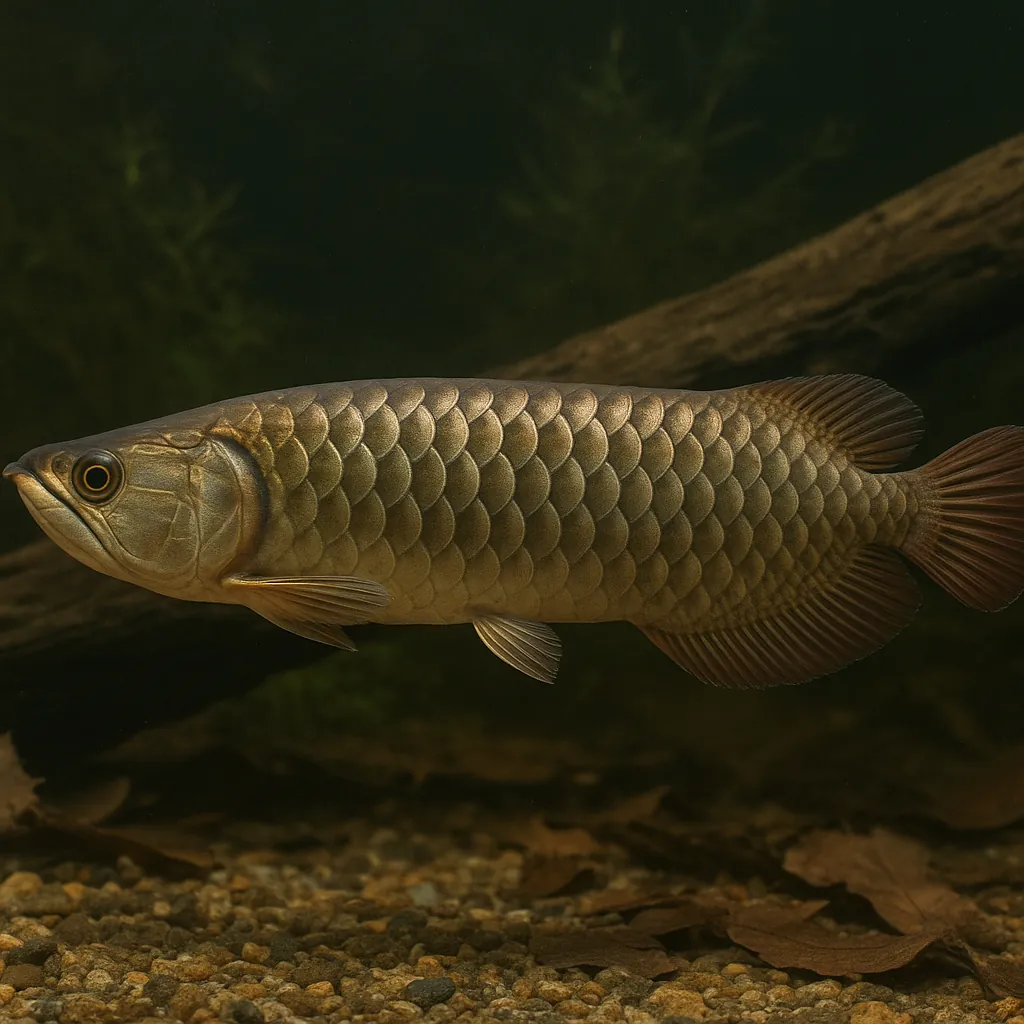
Saratoga fish
Introduction
The Saratoga fish, scientifically known as Scleropages leichardti, is a captivating freshwater species native to Australia. Often referred to as the Southern Saratoga or Spotted Bonytongue, this fish is renowned for its striking appearance and dynamic behavior. Its elongated body, adorned with large, metallic scales featuring red or pink spots, makes it a standout addition to large aquariums. While its beauty is undeniable, the Saratoga's size and temperament require careful consideration, making it more suitable for aquarists with some experience.
Care and Environment
Providing optimal care for the Saratoga fish involves understanding its specific needs and natural behaviors.
What is the minimum tank size required for a Saratoga fish?
Due to its potential size, a minimum tank size of 500 liters is recommended to provide ample swimming space and accommodate its growth.
What are the ideal water parameters for keeping a Saratoga fish?
Maintain water temperatures between 22°C and 28°C, with a pH range of 6.5 to 7.5, and ensure the water is soft to moderately hard.
How should the tank be set up to accommodate a Saratoga fish?
Equip the tank with a secure, tight-fitting lid to prevent jumping, and provide open swimming areas with minimal decorations to mimic its natural habitat.
Filtration should be robust to handle the bioload of this large fish, and lighting can be moderate, as Saratogas are not particularly demanding in this aspect. Feeding should consist of a varied diet of live or frozen foods such as shrimp, prawns, and small fish, supplemented with high-quality pellets. Be cautious during feeding, as they can be aggressive eaters.
Origin and Habitat
The Saratoga fish is indigenous to the Fitzroy River system in northeastern Queensland, Australia. In the wild, they inhabit turbid waters with overhanging vegetation, often residing in long, deep, muddy holes. They are surface dwellers, frequently found near lily pads or submerged logs, and prefer slow-moving or still waters. Their natural environment is characterized by warm temperatures and abundant cover, which should be replicated in captivity to ensure their well-being.
Temperament and Compatibility
Saratoga fish are known for their territorial and semi-aggressive nature, especially as they mature.
Can Saratoga fish be kept with other fish?
They can coexist with other large, robust species but may view smaller or slow-moving fish as prey.
Are Saratoga fish aggressive towards their own species?
Yes, they are highly territorial and aggressive towards conspecifics, so it's advisable to keep only one Saratoga per tank.
What are suitable tank mates for a Saratoga fish?
Compatible tank mates include large catfish, plecos, and similarly sized predatory fish that can withstand their assertive behavior.
To minimize aggression, ensure the tank is spacious and provides ample hiding spots for other inhabitants. Monitoring interactions is crucial to prevent conflicts and ensure a harmonious environment.
Interesting Facts
The Saratoga fish exhibits several fascinating traits that intrigue aquarists.
How does the Saratoga fish reproduce?
They are mouthbrooders; the female carries fertilized eggs in her mouth until they hatch, providing protection during the early stages of development.
What is the lifespan of a Saratoga fish?
With proper care, they can live up to 15 years or more, making them a long-term commitment for aquarists.
Why are Saratoga fish considered symbols of prestige?
In various cultures, arowana species, including the Saratoga, are seen as symbols of luck and prosperity, adding an element of status to their ownership.
Additionally, their prehistoric lineage and resemblance to ancient fish species make them living fossils, offering a glimpse into the evolutionary history of aquatic life.
Sources
All information in this article has been gathered from the following reputable sources:
Overview
Recommended Tank Size 264.2 Gallons (for optimal conditions and to accommodate growth) |
Minimum Group Size 1 |
Minimum Tank Volume 132.1 Gallons |
Maximum Adult Length 35.4 inches |
Average Adult Length 23.6 inches |
Shoaling (6+ required) No |
Preferred Water Type Freshwater, soft to moderately hard |
Temperature Range (°C) 22–28 |
pH Range 6.5–7.5 |
Water Hardness (dGH) Soft to moderately hard |
Typical Lifespan (years) 15 years |